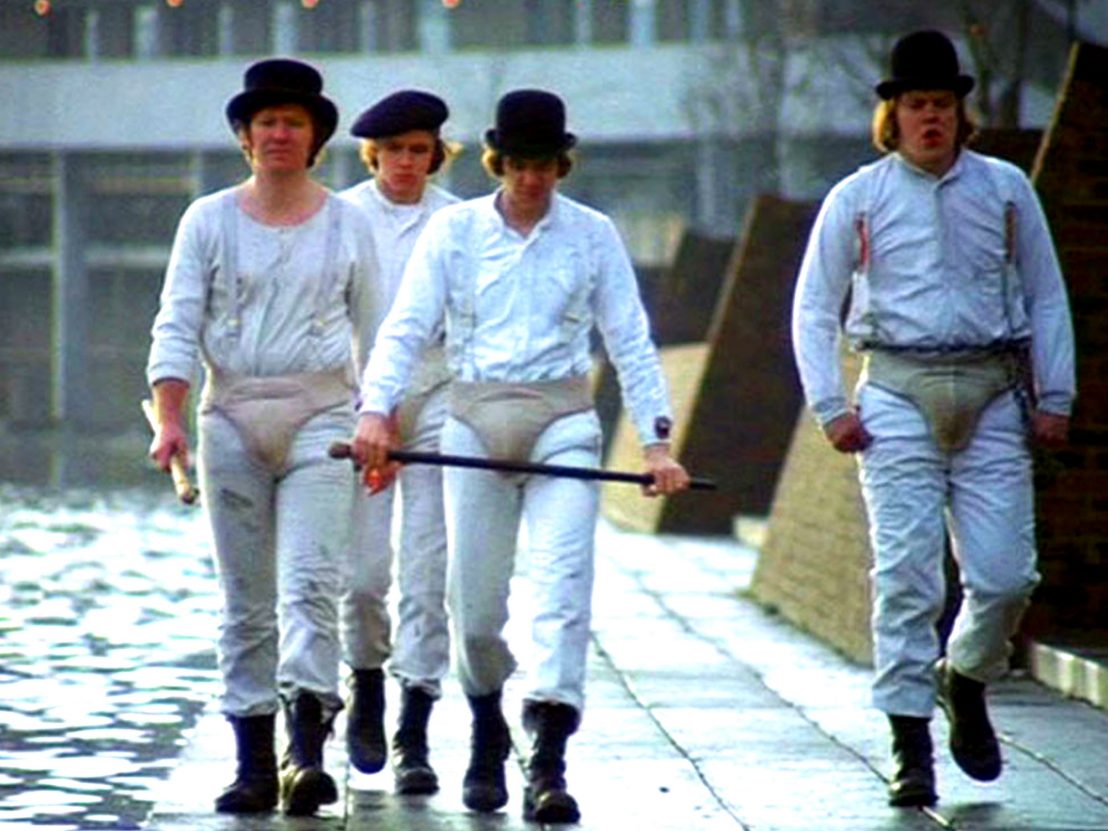
Littered with some of the most startling images of British brutalist architecture ever captured, Stanley Kubrick’s A Clockwork Orange is a social document as much as a dystopian science-fiction film. Based on Anthony Burgess’ 1962 novel of the same name, the film follows a murderous gang of ‘Droogs’ led by Alex (Malcolm McDowell) facing the surrounding realities of violence, punishment and power of the state.
It seems a happy accident that Kubrick captured so much new architecture, the director uncharacteristically opting to shoot much of the film on location. Following 2001: A Space Odyssey, released two years before filming began on A Clockwork Orange, Kubrick saw his budget slashed, with the studio wanting him to prove that he could deliver a film on less money. Subsequently, few sets were constructed.
Yet relying on real-world locations was also fitting for Kubrick’s creative aims: not to showcase a glossy, futuristic world but one that was very much grounded in the present, a threatening future lurking just around the corner. Because of this, many of the locations chosen were everyday buildings, from Brunel University to the famous Chelsea Drugstore on the King’s Road to an underpass along Wandsworth Bridge. As Kubrick once suggested to the French critic Michel Ciment, he and his team researched the most modern buildings of the period through magazines: “The locations were supposed to look a bit futuristic, and we did our preliminary location search by looking through back issues of several British architectural magazines, getting our leads for most of the locations that way.”
The most striking building in the film is the tower block where Alex lives with his parents, filmed on the brutalist Southmere Estate in Thamesmead. Partly colouring the perception of the area’s level of crime, Kubrick’s use of the location is perhaps the film’s most astonishing visual space. The whole area was rebuilt in the late 1960s, fashioned around a variety of angular buildings and motorways, providing both expansive zones – including the marina seen in the film, designed reduce crime via the calming presence of water – and cramped passages and alleyways. It was the supposed future of cities and only a few years old at the time of filming.
Used in the famous scene of Alex’s retaking command of the Droogs, the photography renders the buildings with an unusual feeling, simultaneously representing a morbid future and a failed present. Its realisation is incredibly true to Burgess’ original description of the scene: “As we walked along the flat block marina, I was calm on the outside, but thinking all the time… Now it was lovely music that came to my aid. There was a window open with the stereo on, and I viddied right at once what to do.” It’s impossible to re-read this moment without seeing Thamesmead’s tower blocks reflected in the water, the strange steps leading down to the marina and the concrete designs jutting out in unusual prisms and cubes.
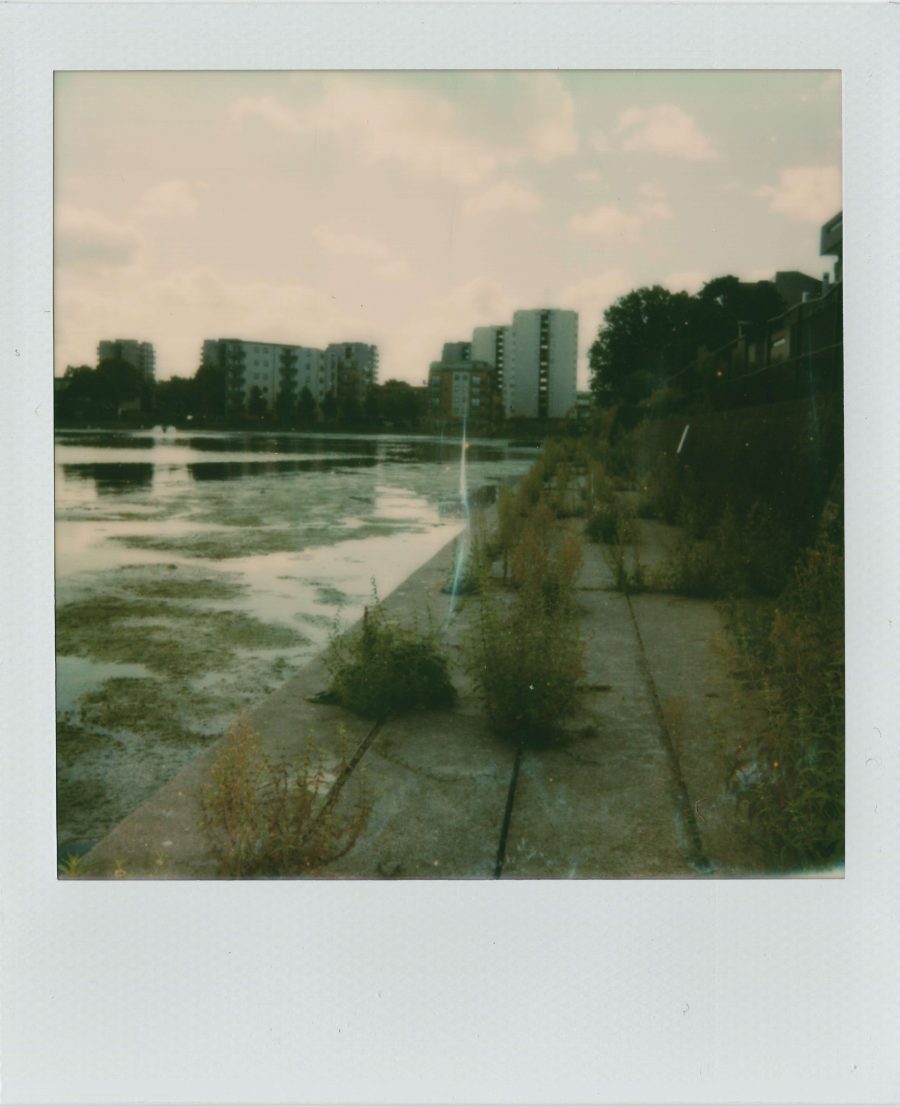
Visiting the location today, it’s clear that much has changed – and quite recently, too. The area has been subject to a development proposal in line with Crossrail (a dystopian project in itself, easily situated in the same universe as the Ludovico Treatment), meaning a total restructuring of the town. The estate Alex lives on in the film is currently in the process of redevelopment and is being slowly demolished. The main sequence of Kubrick’s filming took place behind Binsey Walk and a large gap now exists where the buildings once curved around the marina’s water.
All of the entranceways are closed off, with only one opening left where the bins were once kept, now occupied by a few homeless people. Walking to the other side of the marina, a blue wooden panel blocked off access but was easy to bypass. The contrast between Kubrick’s images and the building today is surreal. Whereas the Droogs walked on pristine concrete, the pathway is now overgrown with weeds. And with the adjacent marina covered in algae, the whole area feels more like JG Ballard’s ‘The Drowned World’ than Burgess’ novel. The building which originally stood in the background has already been demolished, so taking a photograph is to capture only a fragment of how it looked to Kubrick’s eye.
There is understandable resistance from the remaining residents to being moved, even with the acknowledged issues that emerged as a result of the estate’s design mere years after it was completed. It seems ironic that, in images of one of the starkest depictions of dystopia in film, there appears to be more life in Alex’s world than the place as its exists today. Kubrick’s film presents spaces that reflect the cold brutality of binaries: good and evil, punishment and reform, present and future. The real Thamesmead is now crumbling into memory, but at least we have A Clockwork Orange to remind us of this once bold vision of social housing.
Published 15 Sep 2018
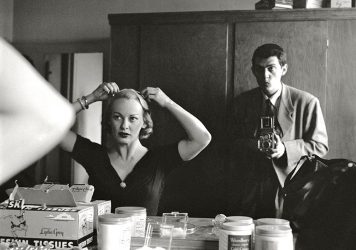
A new book presents some 300 images from the filmmaker’s archives.
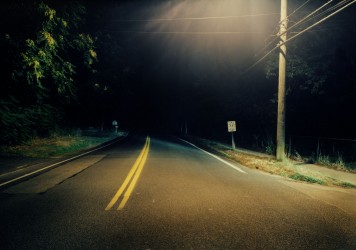
Dean Rogers’ ‘Death Drive’ reveals the spots movie stars and other figures were killed.
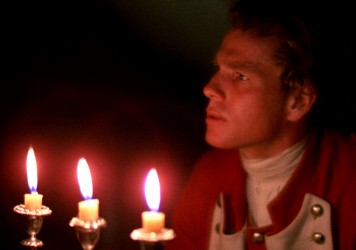
By David Hayles
Forty years after it left critics cold this majestic tragi-comedy stands as a testament to a true master of his craft.